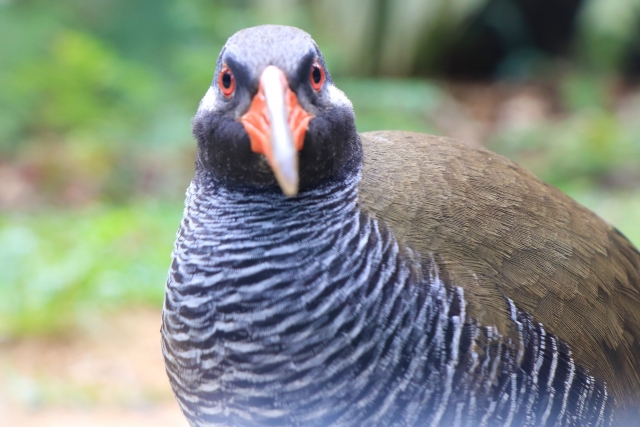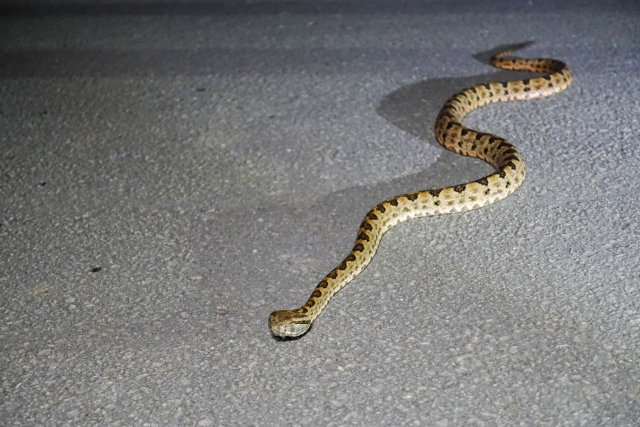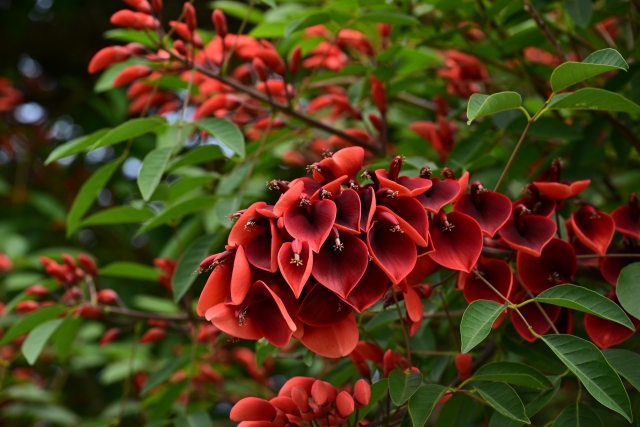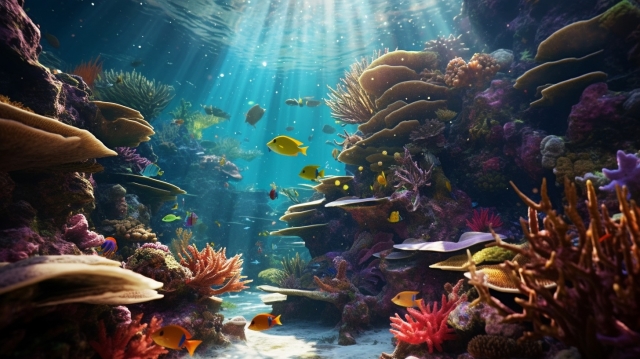Located in the southernmost region of Japan, Okinawa boasts a unique ecosystem filled with various endemic species.
The subtropical climate supports a vibrant array of flora and fauna, many of which are unique to these islands.
Let’s embark on a journey to discover and learn about the distinct animals and plants that call Okinawa home.
Iriomote Wildcat

The Iriomote Wildcat (イリオモテヤマネコ, pronounced Iriomote Yamaneko) is an animal species endemic to the small Iriomote Island of Okinawa.
This elusive feline is a nocturnal creature, typically active from twilight to dawn.
Smaller than a typical housecat, Iriomote Wildcats have a dark gray to brownish-gray coat, with lighter hair on the underparts. They have a rounded ear and a short tail with dark rings.
| Feature | Description |
|---|---|
| Species Status | Critically endangered |
| Habitat | Subtropical rainforest, mangroves, and coastal areas of Iriomote Island |
| Characteristics | Nocturnal, Excellent swimmer, Carnivorous |
| Conservation | Protected under Japanese law, Iriomote Wildlife Conservation Center established |
Because of their endangered status and unique characteristics, efforts are being made for their protection and conservation, including limiting tourism activities that may disturb their habitat.
Okinawa Rail

The Okinawa Rail (ヤンバルクイナ, pronounced Yanbaru Kuina) is a flightless bird found only in the northern part of Okinawa’s main island.
This bird has a stout build with a blackish-blue beak, white underparts, and dark brown wings. They are known for their distinctive calls that often resonate within the Yanbaru forest, especially during early mornings and evenings.
| Feature | Description |
|---|---|
| Species Status | Endangered |
| Habitat | Yanbaru forest in northern Okinawa |
| Characteristics | Flightless, Active during the day, Omnivorous |
| Conservation | Protected under Japanese law, Efforts to preserve habitat ongoing |
Conservation measures such as habitat preservation and predator control are being implemented to protect the Okinawa Rail, an icon of Okinawa’s biodiversity.
Okinawa Habu

The Okinawa Habu (ハブ, pronounced Habu) is a venomous pit viper endemic to the Ryukyu Islands.
Renowned for its potent venom, the Okinawa Habu is often feared by locals and tourists alike. The snake has a robust, muscular body, with a head that is distinct from the neck. Its color ranges from greenish-brown to gray with dark blotches along its back, enabling it to blend seamlessly into its surroundings.
| Feature | Description |
|---|---|
| Species Status | Not endangered |
| Habitat | Various habitats from forests to human residences |
| Characteristics | Nocturnal, Highly venomous, Carnivorous |
| Interesting Fact | Featured in Okinawan folklore and used in Habu Sake |
Despite its notorious reputation, the Okinawa Habu plays a critical role in controlling the population of rodents in the ecosystem.
Deigo Tree

The Deigo tree (デイゴ, pronounced Deigo) is an iconic part of Okinawa’s flora.
It’s known for its fiery red flowers, which bloom between March and May, covering the tree with a bright crimson canopy. The tree is sturdy, able to resist the salty winds of Okinawa, making it a symbol of the Okinawan spirit of resilience.
| Feature | Description |
|---|---|
| Species Status | Not endangered |
| Habitat | Coastal regions of Okinawa |
| Characteristics | Bright red flowers, Blooms in spring, Drought-tolerant |
| Significance | Symbol of Okinawa, Featured on the Okinawa Prefecture flag |
The beautiful Deigo tree is not just a feast for the eyes, but it also holds cultural significance, as its image is depicted on the Okinawa Prefecture flag.
Sango

The Okinawa Sango (沖縄サンゴ, pronounced Okinawa Sango), also known as Okinawa coral, is a crucial component of Okinawa’s rich marine biodiversity.
Known for their vivid colors and intricate structures, these corals are not only aesthetically beautiful but also play a crucial role in sustaining the underwater ecosystem.
| Feature | Description |
|---|---|
| Species Status | Some species are threatened due to various environmental factors |
| Habitat | Warm tropical waters around Okinawa |
| Characteristics | Vivid colors, Forms large reef systems |
| Significance | Important for marine biodiversity, Attracts divers and snorkelers |
The Okinawa coral reefs are a hub of life, providing shelter and food for numerous marine creatures, including fish, crustaceans, and various types of algae.
These reef systems also attract scuba divers and snorkelers, offering them a fascinating glimpse into the vibrant underwater world.
However, it’s important to note that some coral species are threatened due to environmental changes, pollution, and destructive fishing methods.
As such, there are concerted efforts in Okinawa and across the globe to protect and conserve these valuable marine resources.
When visiting these corals, please remember to respect the marine life and avoid touching or disturbing the corals to help preserve these natural wonders for future generations.
Conclusion
Whether you’re a nature enthusiast, an eco-traveler, or just curious about Okinawa’s unique biodiversity, the region’s distinct animals and plants will certainly amaze you.
As we respect and admire these creatures, let’s also remember to protect and preserve them for future generations.
From the elusive Iriomote Wildcat, the distinctive Okinawa Rail, the fearful Okinawa Habu, to the stunning Deigo tree, Okinawa’s flora and fauna present an exciting exploration opportunity into an ecosystem that is rich, diverse, and unique.
So, when you visit Okinawa, be sure to take a moment to appreciate this wonderful biodiversity that adds to the allure of this tropical paradise.


comment